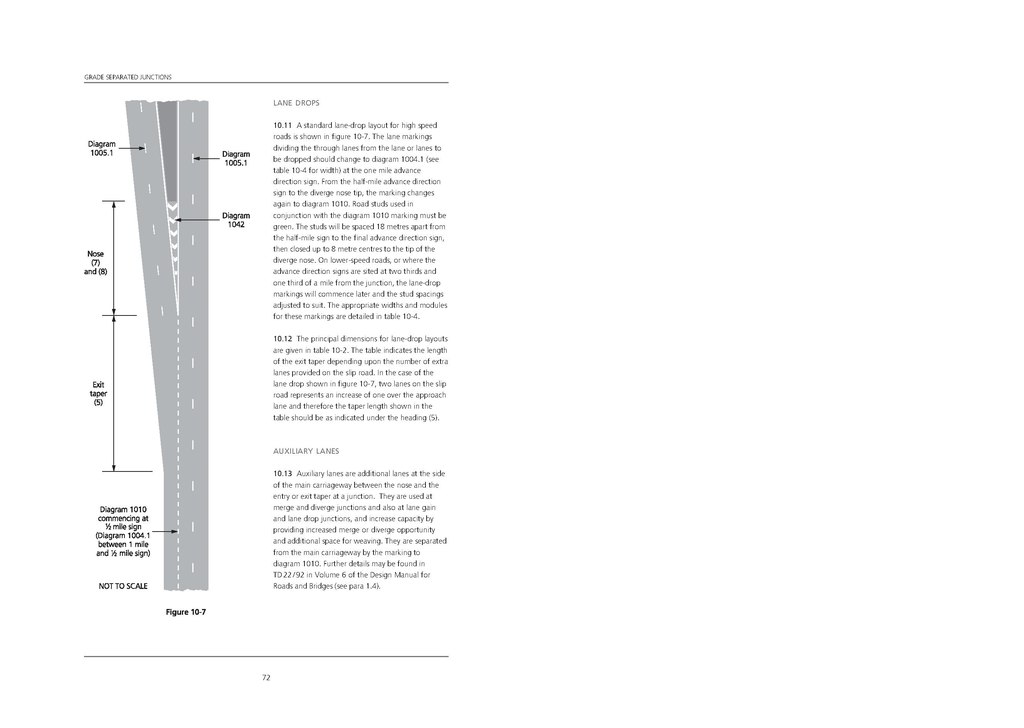
LANE DROPS
10.11 A standard lane-drop layout for high speed roads is shown in figure 10-7. The lane markings dividing the through lanes from the lane or lanes to be dropped should change to diagram 1004.1 (see table 10-4 for width) at the one mile advance direction sign. From the half-mile advance direction sign to the diverge nose tip, the marking changes again to diagram 1010. Road studs used in conjunction with the diagram 1010 marking must be green. The studs will be spaced 18 metres apart from the half-mile sign to the final advance direction sign, then closed up to 8 metre centres to the tip of the diverge nose. On lower-speed roads, or where the advance direction signs are sited at two thirds and one third of a mile from the junction, the lane-drop markings will commence later and the stud spacings adjusted to suit. The appropriate widths and modules for these markings are detailed in table 10-4.
The principal dimensions for lane-drop layouts are given in table 10-2. The table indicates the length of the exit taper depending upon the number of extra lanes provided on the slip road. In the case of the lane drop shown in figure 10-7, two lanes on the slip road represents an increase of one over the approach lane and therefore the taper length shown in the table should be as indicated under the heading (5).
AUXILIARY LANES
10.13 Auxiliary lanes are additional lanes at the side of the main carriageway between the nose and the entry or exit taper at a junction. They are used at merge and diverge junctions and also at lane gain and lane drop junctions, and increase capacity by providing increased merge or diverge opportunity and additional space for weaving. They are separated from the main carriageway by the marking to diagram 1010. Further details may be found in TD 22 / 92 in Volume 6 of the Design Manual for Roads and Bridges (see para 1.4).
72
